A good friend of mine is really into taking pictures with his iPhone. Like many people, he uses it for casual snaps, but he also tackles more ambitious photographic projects with it, including elaborate stitched panoramas and mosaics. I, on the other hand, do most all my picture taking with old film cameras. On the surface, you might not imagine we have much in common photographically, and yet, we’re really two sides of the same coin. Both of us have learned to exploit the power of limitations.
While I enjoy the versatility my 35mm SLRs and their various lenses, there’s a part of me that gravitates strongly towards a one-camera/one-lens setup. On my recent trip to Australia I packed my current favourite 35mm SLR (the underrated Olympus OM PC) along with 24mm, 50mm, and 135mm, Zuiko lenses. With this rig I’m pretty much ready for anything. I also brought along my Yashica-Mat medium-format, twin-lens reflex (TLR) camera. It features a fixed 75mm f/3.5 lens, and is strictly a manual-control camera — it doesn’t even have a built in light meter. And yet, in spite of its basic feature set, I got most of my favourite Australia shots with it. Why is that?
Creating art is largely an exercise in decision making — so much so that the greater the range of options, the more difficult it can often be to actually produce the work. Sometimes the burden of choice can be overwhelming. I find that the fixed lens of my TLR takes a lot of options off the table and streamlines the decision-making process. In other words, for me at least, the basic camera offers a more direct path to creative expression.
Let me illustrate this idea with a concrete example. While visiting the Sydney Opera House, I was daunted by the challenge of making a picture that wasn’t just like millions I had already seen. With the Olympus SLR and its three lenses, I had a wide range of options. I tried all kinds of different framings, situated myself at various vantage points, and experimented with all three lenses. I returned to the buildings several times, but just couldn’t crack it. In the end, I took a few photos (you really have to, after all), but none with any excitement. On my final night in Sydney, I grabbed the Yashica-Mat and wandered back to the Opera House. In spite of having only a single lens and frame orientation to work with, I suddenly found all kinds of appealing pictures in front of me. It was as if I was seeing the shape and structure of the buildings for the first time. Having the square frame and the 75mm lens pushed me past a lot of the options that stymied me when I had the SLR in my hands. With the Yashica-Mat, I only had to worry about where I positioned myself and whether or not what I saw in the viewfinder excited me. It was almost as if I’d found a direct path through a maze.
I’m not saying that any of the pictures I got that evening are great art, but at least it’s art that I enjoyed making. The lesson in all this is that when you’re feeling like you’re spinning your wheels artistically, maybe the answer isn’t a new camera or lens. Maybe the solution is to put away all the gear, save for the simplest camera you own, and go out to see what you can see. You might discover, as I did, the power of limitations.
(Did you find this article interesting or helpful? If so, consider using this link the next time you shop at Amazon.com. Better yet, bookmark it for future use. Thanks to Amazon’s associates program, doing so costs you nothing yet helps keep this site up and running. Thanks!)


 Subscribe with RSS
Subscribe with RSS


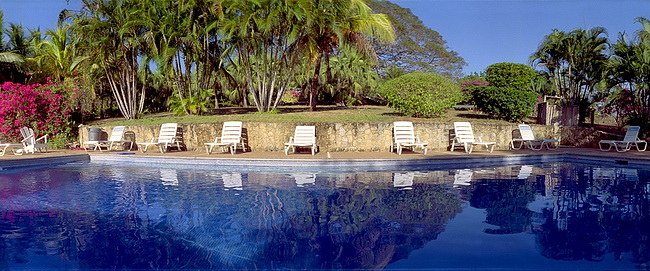
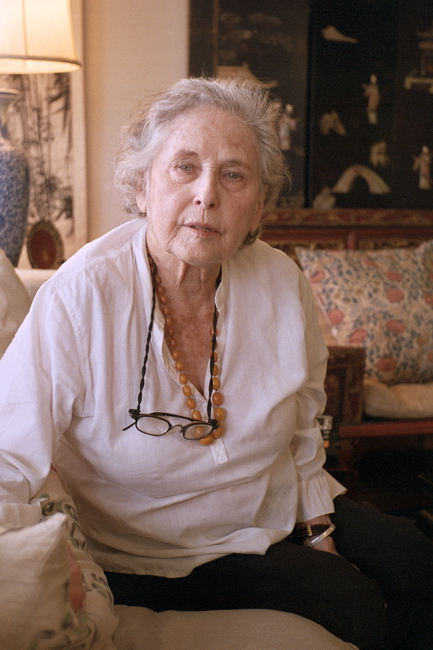

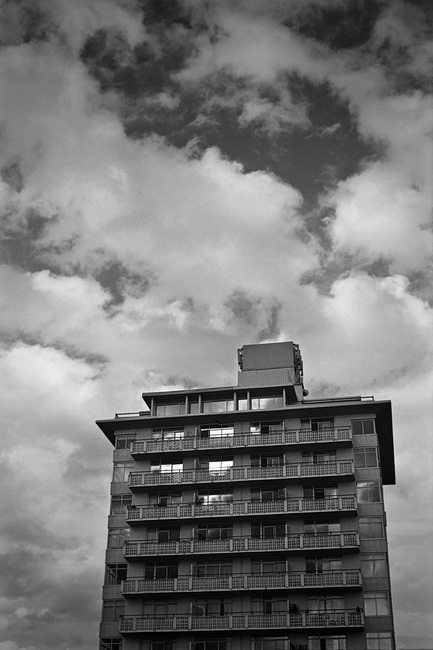

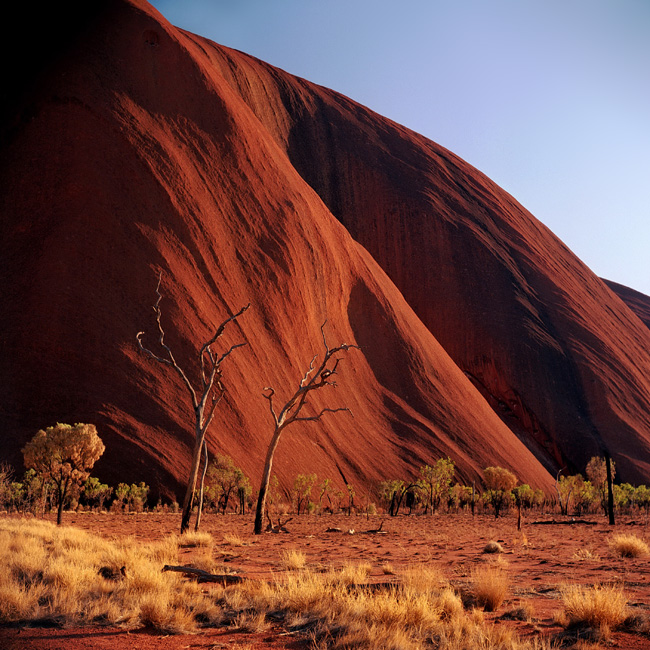
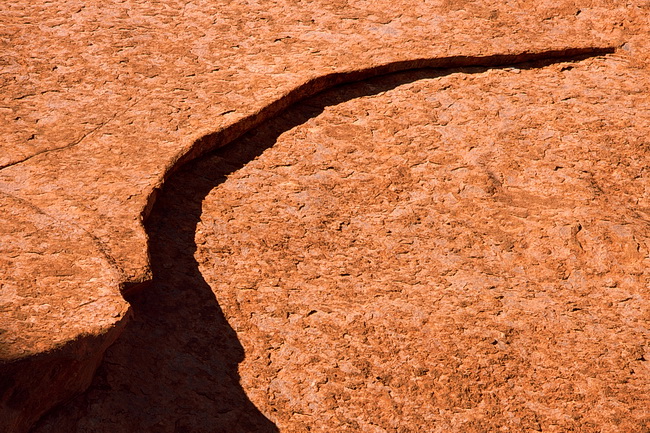
I also (recently) discovered that I feel much more relaxed going out with a simple camera with few options. Nothing to worry about, just look for nice compositions and interesting lighting. When first using 6×6 film, I was worried about having only 12 exposures per roll. But even that appeared to be no problem. If you think twice before pressing the shutter button, 12 photos is just fine! I even started using rolls of 24 exposures in my Olympus half frame camera because it seems to take forever to finish a 36 exposures (=72 photos) roll. On digital, 72 photos is nothing though; it does make you wonder about quality versus quantity …
Nice picture of the Opera House, I like the lines and the shadows. There is a very interesting post about a photographer using an old RollieFlex…http://www.luminous-landscape.com/reviews/rolleiflex.shtml
Gosh, I didn’t think that Luminous Landscape would post an article about film use!
I guess my Yashica-Mat is a poor man’s Rollie. I find it a very capable piece of gear though.
Excellent post, and what a perfect example.
I bought my first SLR a few weeks back, a Praktica BMS Electronic, and was delighted with the first couple of test rolls of film… But since then I’ve gone back to compacts and had more fun using my beloved Olympus XA2, a point and shoot auto everything Pentax Espio 120Mi and an incredibly cheap and flimsy ActionSampler.
Fewer options inspires new vision and greater creativity…
Another example – a friend got a new, very capable, digital camera for Christmas. She hasn’t taken a single picture with it, because she’s intimidated by the manual, and feels she needs to go on a photography course to even begin using it. “Plus you have to understand all about the light, don’t you?” she also said…. My advice was put it on auto and get out and get shooting, learn from your own pictures!
It’s really frustrating when such wonderful equipment is available (film and digital cameras) and people are stuck because they’re overwhelmed with too many options.
(I might send her a link to this post!)
Your thoughts on a single camera-single lens concept is the exact reason I pre-ordered a Fujifilm X100s. I plan on pairing it with my Electro35 GS for just about all of my shooting in the near future. As I make the transition from working pro to retirement, I want to simplify. When I pick up my Nikons, I want to have my fast zooms along with 1-2 primes. At my age that is starting to be a lot to carry all day. With just the fixed 45mm on the GS and 23mm (35mm full frame) on the X100s, I plan on taking the challenge. Thanks for this piece that talks to the concept. It gives me encouragement to continue down a different and exciting path.
Excellent article! I too noticed this while wondering around the beach with a friend of mine the other day. The two of us usually go on photowalks in interesting parts of town together and we hadn’t planned on really doing any shooting, so we didn’t have any cameras with us. Nevertheless, after a yack and a few coffees we were walking along the beach and we were both suddenly interested in the lighting conditions, the tide being well out, and the amount of people on the beach doing different things. We both just had cell phones to snap with, but just gave it a go without really thinking too much. I ended up with a couple of not to baddish shots using some of the fun little apps on my phone that I enjoy shooting with. I guess the old saying of “the best camera is the one you have on you at the moment” really rings true, but relaxing and thinking about the picture instead of the gear is always the ideal way to really enjoy the act of taking pictures.
Thanks Jevon — a good read. It’s true, the best camera is always the one you have with you. That’s why I always try to make sure I have a good one with me. You never know when you’re going to chance upon something really great. Luckily, there are quite a few really good pocketable cameras, like some of the ones I’ve reviewed in the Favourite Cameras section (the Olympus Stylus and Pentax Espio Mini, in particular).